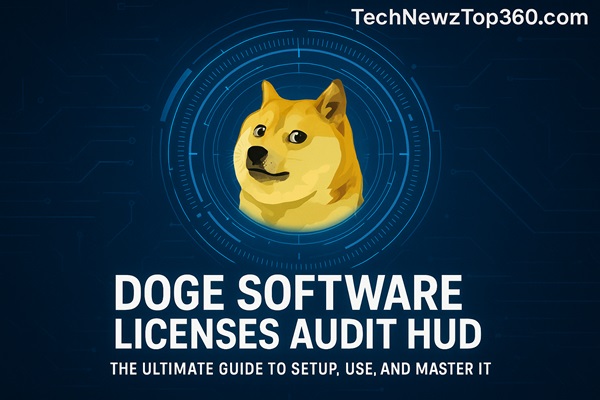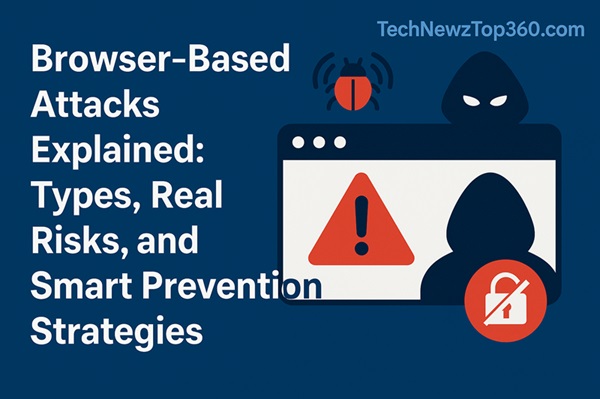Introduction to Doge Software Licenses Audit HUD
In the fast-paced world of digital development, managing multiple software licenses can feel like navigating a maze. Whether you’re an IT manager, developer, or startup founder, you know how crucial it is to keep your software usage compliant and organized.
That’s where Doge Software Licenses Audit HUD steps in — a smart, visual, and powerful License Audit Heads-Up Display (HUD) that simplifies how you view, track, and manage software licensing data.
This guide will walk you through what Doge Audit HUD is, how to set it up, and expert tips to make the most out of it. By the end, you’ll have everything you need to handle audits with confidence and keep your systems clean, compliant, and optimized.
What Is Doge Software Licenses Audit HUD?
Doge Software Licenses Audit HUD is a specialized dashboard built for real-time tracking and auditing of software licenses across multiple environments. It’s designed to make license management transparent, accurate, and fast, especially for organizations juggling dozens of products.
Think of it as your mission-control panel for all things software compliance — it gathers data from your systems, visualizes key insights, and flags anomalies instantly.
Key Features:
- 📊 Real-Time License Tracking: Monitor license usage across all devices and applications.
- 🔒 Audit Compliance Reports: Generate structured reports for audit readiness.
- ⚙️ Smart Integration: Connects easily with tools like AWS, GitHub, or internal license servers.
- 🧠 AI-Assisted Alerts: Detect irregularities and prevent accidental policy violations.
- 💡 Visual Dashboard: Offers a clear, color-coded HUD for instant understanding.
(Related: Learn how digital tools are reshaping business efficiency)
Beginner’s Setup Guide for Doge Audit HUD
Setting up the Doge Software Licenses Audit HUD is simple — but it’s worth doing it right from the start. Let’s go step by step.
1. Download & Install
Start by downloading the latest stable version of Doge Audit HUD from the official source or your enterprise software repository.
💡 Tip: Always verify checksum integrity to avoid corrupted downloads.
Once installed, launch the application and sign in with your organization credentials or admin key.
2. Configure System Access
To let Doge HUD collect license data, it needs secure API access to your systems.
- Go to Settings → Integration → Add Source.
- Choose your preferred license source (e.g., Windows License Manager, cloud-based tools, or custom database).
- Provide read-only access tokens for enhanced security.
3. Calibrate the HUD Interface
Under View Settings, you can:
- Adjust the data refresh interval.
- Customize HUD colors for quick recognition (green for active, red for expired).
- Set up notifications for expiring or duplicate licenses.
4. Run Your First Audit Scan
Click “Run Audit” to initiate the first scan.
The HUD will automatically:
- Fetch license data,
- Identify duplicates or expired entries,
- Generate a preliminary compliance score.
🧩 You can export the full report in CSV, JSON, or PDF format for your internal documentation.
Understanding the Doge Audit HUD Dashboard
Once your setup is complete, you’ll be greeted with the dynamic HUD interface — a clean and visual overview of all your software assets.
Dashboard Highlights:
| Element | Description | Why It Matters |
|---|---|---|
| Active Licenses | Shows all valid and in-use licenses | Helps avoid unused subscriptions |
| Expired Licenses | Flags inactive or outdated software | Keeps your systems compliant |
| Duplicate Keys | Detects reused keys or policy breaches | Reduces legal and operational risk |
| Usage Heatmap | Visualizes software usage trends | Optimizes cost and deployment |
This makes Doge Audit HUD more than just a monitoring tool — it becomes your decision-making assistant for license control.
Tips and Tricks for Smarter License Auditing
Once you’re comfortable with the basics, it’s time to take advantage of the pro features that make Doge HUD shine.
1. Automate Routine Checks
Set up scheduled audits every week or month to keep license records updated without manual intervention.
Automation helps spot issues like key duplication or expired vendors before they cause disruption.
2. Use Smart Filters
Use HUD’s filtering system to isolate:
- Software nearing expiration,
- Underutilized licenses,
- Vendor-specific contracts (like Adobe, Microsoft, etc.).
This helps focus your compliance checks on what matters most.
3. Integrate with Cloud Dashboards
If your company uses AWS, Azure, or Google Cloud, you can link Doge HUD for centralized visibility.
This ensures that even virtual or ephemeral instances are tracked accurately.
4. Enable AI-Alerts
Turn on AI anomaly detection to catch unusual license spikes or suspicious patterns.
Example: If the same key suddenly activates in multiple locations, the system can auto-flag it for review.
5. Export Smart Reports
Use the Report Builder feature to create:
- Compliance summaries for internal teams,
- Vendor usage stats for procurement,
- Audit-ready logs for external reviewers.
This can drastically reduce manual effort during actual audits.
Troubleshooting Common Issues
Even the best systems need fine-tuning. Here’s a quick table of common issues and quick fixes:
| Issue | Possible Cause | Solution |
|---|---|---|
| Missing Data | API token expired | Regenerate token and re-authorize integration |
| Incorrect Report | Outdated data cache | Clear cache and re-run audit |
| HUD Lagging | Too many concurrent scans | Schedule audits during off-peak hours |
| Alerts Not Showing | Notification permissions off | Re-enable notifications in app settings |
Smart Prevention Tips for Long-Term Success
Maintaining clean license records isn’t a one-time job. Follow these smart practices to stay audit-ready all year long:
- 🔁 Regularly refresh API keys for secure access.
- 🧾 Maintain a license inventory log outside the tool as backup.
- 📅 Schedule periodic audits with automated reminders.
- 👥 Assign roles and permissions carefully to avoid accidental modifications.
- 🔐 Use encryption for stored license keys to maintain data security.
(Also read: Ultimate Guide to FOK959S-M Model for managing modern tech workflows.)
Why Doge Audit HUD Matters for Businesses
In today’s compliance-driven world, being unprepared for a license audit can cost time, money, and reputation.
Doge Software Licenses Audit HUD ensures:
- You know exactly what’s installed and licensed.
- You can prove compliance instantly.
- You avoid duplicate purchases or vendor penalties.
For IT admins, developers, and business owners alike, it’s the key to smoother, smarter, and safer software management.
Conclusion: Manage Licenses Like a Pro
The Doge Software Licenses Audit HUD isn’t just a tool — it’s a strategic advantage.
By combining visual insights, automation, and AI-driven intelligence, it turns complex license audits into effortless tasks.
Whether you’re setting it up for the first time or optimizing existing workflows, Doge HUD helps you stay compliant, efficient, and stress-free.
So go ahead — launch your first scan, explore the visuals, and experience how effortless software audits can be.
Frequently Asked Questions (FAQs)
Doge Software Licenses Audit HUD is a tool designed to track, manage, and audit software licenses across multiple systems. It helps users stay compliant, avoid duplicate keys, and visualize all active or expired licenses in one easy dashboard.
You can install Doge Audit HUD by downloading it from the official source or your enterprise portal. Once installed, connect it with your license data sources using secure API keys, configure your HUD settings, and run your first audit to generate a compliance report.
Yes. The HUD is scalable and can be customized for both small teams and large enterprises. Small businesses benefit from its automation, as it helps prevent overspending on unnecessary licenses while ensuring every product is properly tracked.
It’s recommended to run a full audit at least once every month. However, you can schedule weekly automated scans for real-time updates, especially if your organization installs or removes software frequently.
Yes. The tool includes AI-powered anomaly detection, which can flag irregular patterns such as unregistered software, reused activation keys, or unexpected installations across your network. This makes it an effective tool for security and compliance monitoring.




